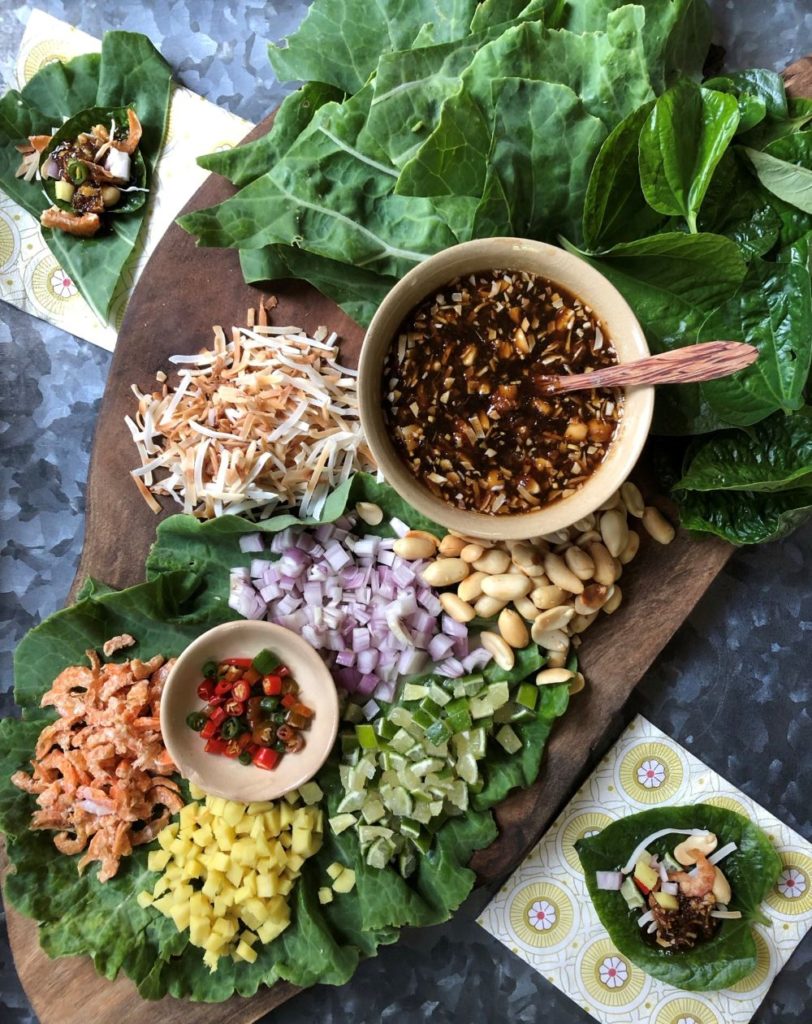
Once a year, I use one of my favorite recipes in Simple Thai Food to make this stunningly good Thai snack called miang -- one biters of flavorful morsels encased in a tiny leaf packet. Miang are meant to be eaten in a single mouthful so that you get to enjoy a burst of synergistic flavors. I've had miang with trout eggs at Nari, an acclaimed Thai restaurant in San Francisco. I've also had miang at a fancy food conference hosted by the Culinary Institute of America in Napa Valley.
The iconic version of Thai miang is miang kham, which involves a wild pepper leaf (cha-phlu in Thai, la lot in Vietnamese) topped with ginger, shallot, chile, coconut, dried shrimp, peanuts, and lime plus an alluring sweet briny sauce. It's strange to think of eating all those things raw but combined on the leaf with the sauce, it's sumptuous, flavorful and harmonic. It's extraordinary.
What I've described as miang kham seems difficult but it's not. In Simple Thai Food, Leela Punyatarabandhu offers the recipe that I keep returning to. Her miang kham is simple in that it is pretty straightforward and you can make the sauce days in advance (the sauce freezes well too!). Once you set it up, diners do the rest of the work to assemble their own salad bites. It's served at room temperature so there's little tending involved. No last minute cooking.
What may be challenging is sourcing the ingredients but there are workarounds. If you're game, make miang kham and set it out for a fantastic nosh. Beer and/or wine are perfect pairings.
Source the Leaf or Substitute
If you're lucky to find miang kham at a Thai restaurant, it's often served with spinach leaves which are lovely but have a mild flavor. For the wild pepper leaves, head to a hardcore Thai or Vietnamese market Chinese market catering to Southeast Asian cooks. Outside of Atlanta, I've spotted the leaves at the Buford Highway Farmer's market, a super well-stocked international market. The heart shaped leaves will likely be labeled la lot because they're the same as the leaves Viet folks use for thit bo nuong la lot, grilled beef in la lot.
The leaves may be labeled wild betel leaf even though they are actually wild pepper leaf. The leaves are kin to peppercorns and belong to the Piper family of plants. Check my recipe link above to see the leaves. Resist buying larger and thicker betel leaf, which you cannot use for this recipe; they are not the same or even related.
If you cannot find wild pepper leaf, then use tender collards. For this past weekend, I used Portuguese kale, which is like collards but milder in flavor and texture. Broccoli leaves work too. Those leaves offer an earthy flavor.
Leela suggests cutting them as 3-inch squares but I found cutting them as triangles to work too. (Imagine a small pizza slice or pie wedge.) When miang is made with collards or broccoli leaves, it's called miang khana.
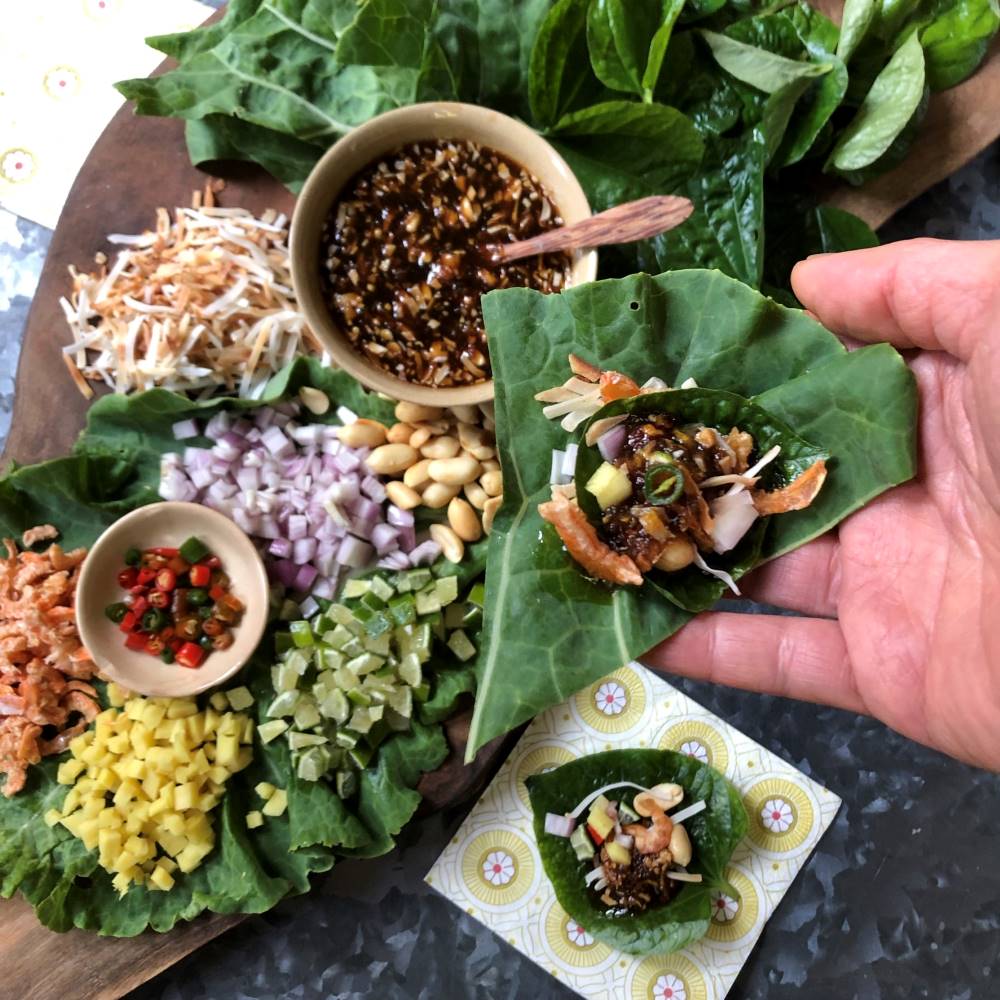
La lot comes in various sizes so I used the smaller cha-phlu leaves atop the kale for a combo miang. The regular miang kham is closer to the bottom of this photo below. Why waste?
The Secret is in the Sauce
Well, there's no secret in the sauce when there's a recipe to follow. However, you do need to source dried shrimp, both for the sauce and topping. But that is easy -- just shop at a Chinese or Southeast Asian market. H-Mart may have it it too.
Galangal is relatively easy to find wherever you may find the dried shrimp, though you could double up on the ginger if you cannot find galangal. Don't use dried galangal for this recipe. I freeze galangal as chunks to make life simpler.
Fresh lemongrass is key here and summer is when it should be extra plentiful at markets. Grab a bunch or two and freeze leftover after using the one stalk needed for this recipe. I used Trader Joe's dried coconut for the sauce and topping.
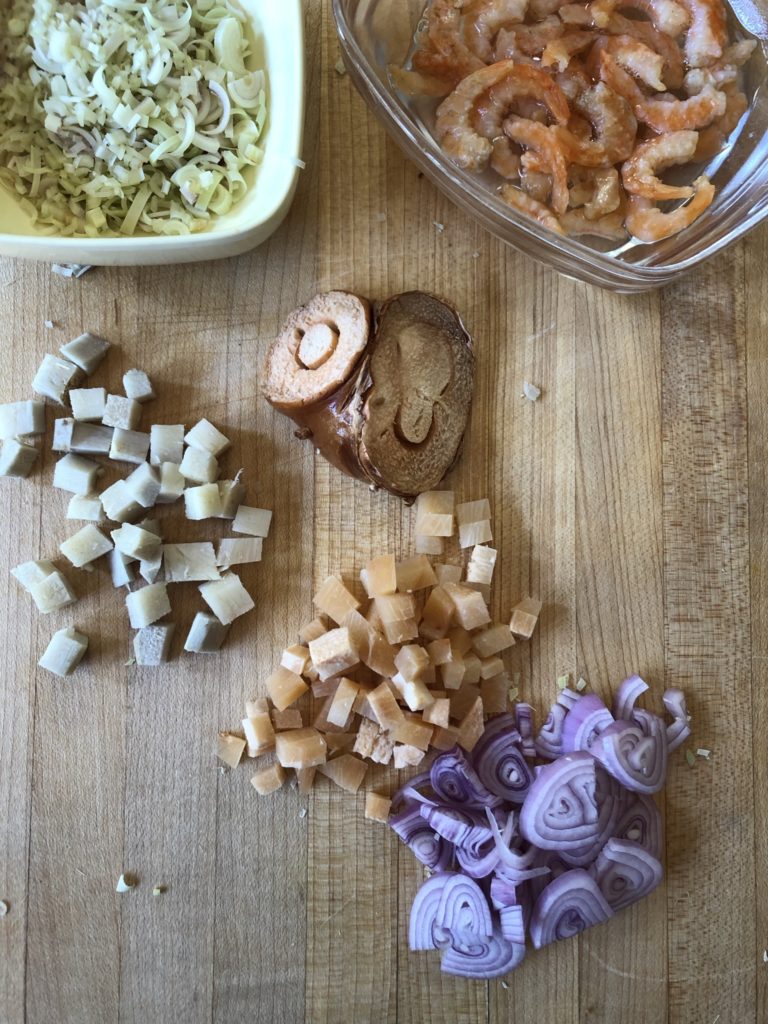
The hardest ingredient to find is Thai fermented shrimp paste, called kapi. You only need 1 teaspoon for the sauce. The brand below is what I used and have had it for years. It's salty and keeps well refrigerated or in a cool cupboard. The shrimp paste and fish sauce add a briny, funky backbone to anchor the sauce.
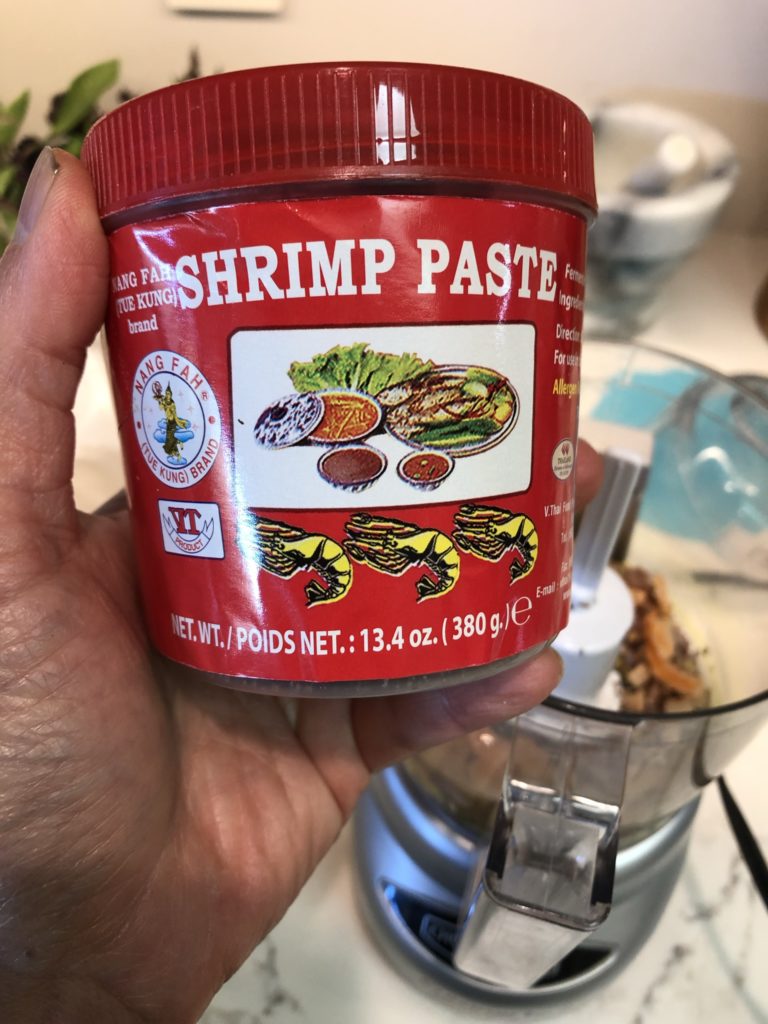
If you cannot find kapi, use Chinese or Vietnamese fine fermented shrimp sauce (mam tom), Malaysian toasted belancan, or in a real pinch, substitute anchovy paste sold in tubes at many supermarkets.
After cooking and cooling, the sauce is thick like honey. It will seem a bit rough but what it needs are the final touches -- toasted coconut and peanuts. When making the sauce in advance, I add those ingredients close serving to finish the sauce.
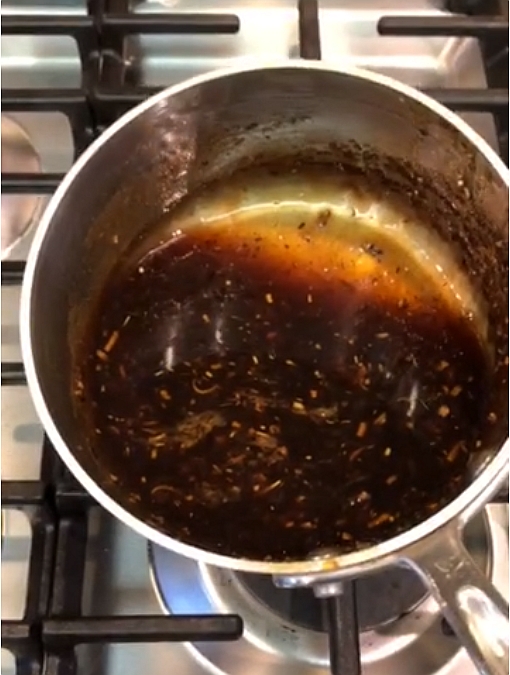
Cool Lime Trick
Small pieces of lime rind are part of Leela's Thai miang kham. It is not strange tasting but rather, adds citrusy bitter tang to refresh. You could squeeze on some lime juice but why not do the little dice? The cuts are funny but this photo should explain my instructions in the recipe.
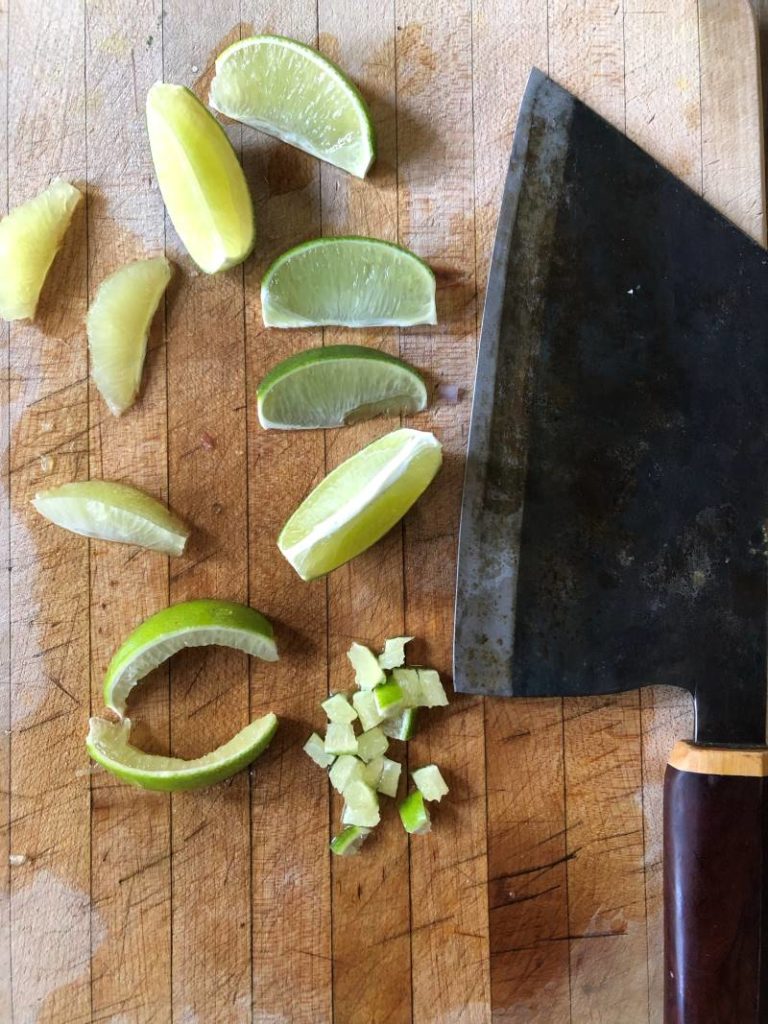
After you make the sauce, the rest is downhill. In our house, one recipe of sauce is plenty for 1.5 to 2 rounds of miang kham. After serving our guests last weekend (it was our first late pandemic dinner party), I froze the sauce for another round later this summer.
This is stunningly good one biter Thai snack that you should make at least once, if not twice, and hopefully add it to your repertoire!
Miang Kham Wild Pepper Leaf Bites
Ingredients
For the sauce
- 1 Tbsp dried meaty shrimp
- ½ cup hot water
- ½ cup plus 2 Tbsp dried, unsweetened coconut
- 1 stalk lemongrass, trimmed and thinly sliced (2 to 3 Tbsp)
- 1 shallot (1 oz), thinly sliced against the grain
- 2 (¼-in -thick slices) peeled galangal, coarsely chopped
- 2 Tbsp coarsely chopped peeled ginger
- 1 tsp fermented shrimp paste (Thai, Chinese or Vietnamese); see Note for substitution
- ½ cup packed grated palm sugar plus ⅓ cup packed dark brown sugar, or ⅔ cup packed dark brown sugar
- 1 Tbsp fish sauce
- ¼ cup water
- 2 Tbsp finely chopped or crushed unsalted, roasted peanuts
Salad
- 1 lime
- 1 (3-in) section fresh ginger, peeled and cut into ¼-in dice
- 2 small shallots (2 oz total), peeled and cut into ¼-in dice
- ½ cup unsalted, roasted peanuts
- 5 or 6 Thai chiles, sliced crosswise into ¼-in pieces
- ⅓ cup meaty dried shrimp
- 24 to 30 la lot (cha-phlu) leaves, or 3-inch pieces of collard greens, Portuguese kale, or Chinese broccoli leaves
Instructions
- Put the dry shrimp in a small bowl, add the hot water and let soak for 15 minutes.
- Put all the dried coconut in a wok or 14-inch skillet and toast over medium heat, stirring constantly until medium brown, about 2 to 3 minutes. Reserve 2 tablespoons of the toasted coconut for the sauce and set the remainder aside for the salad. Wipe out any coconut sediment from the pan. Add the lemongrass, shallot, galangal, and ginger to the clean wok, then toast over medium-high heat, stirring constantly until the shallot slices are barely damp and feel dry to the touch, about 5 minutes. Transfer the toasted mixture to a small food processor, add the soaked shrimp, its soaking liquid, and shrimp paste. Process to a wet, relatively smooth paste. (Or, you may pound and grind using a mortar and pestle.)
- Scrape the paste into a 1-quart saucepan, then add the sugars, fish sauce, and water. Bring to a boil over medium-high heat, stirring frequently. When the sauce has boiled and thickened to reduced to about 1 cup, after 2 to 3 minutes, take the pan off the heat. Let the sauce cool completely. Before serving, stir in the crushed peanuts and reserved 2 tablespoons toasted coconut (finely chop the coconut if it came as shreds). Transfer to a small serving bowl.
- To ready the lime for the salad, cut it into 8 wedges, then trim away the core but leave a bit of the juicy flesh attached to the rind. Cut the wedges into ¼-inch dice.
- To serve, arrange the lime, ginger, shallot, peanut, chilies, toasted dried coconut, leaves and dressing on a large serving platter. To eat, put a leaf in your palm, add a bit of each component in the center, top with a small spoonful of dressing. Gather up the leaf to form a bag and eat the whole thing in one bite. Repeat until all the toppings and leaf are gone.













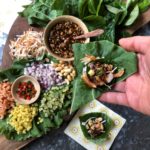




Gail Lopez-Henriquez says
Dale Talde's cookbook has a variation using large red perilla leaves instead of the la lot. It introduces a new flavor, but since I like red perilla and grow tons of it, I love it.